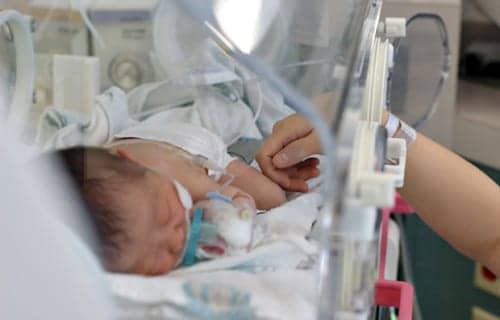A clinical trial at Beth Israel Deaconess Medical Center’s neonatal intensive care unit that a new prevention technology reduces apneic events and improves critical clinical parameters in preterm infants. The findings are reported in the November 23 issue of Pediatrics.
The technology was developed by scientists, engineers and clinicians at Harvard’s Wyss Institute for Biologically Inspired Engineering, University of Massachusetts Medical School, Massachusetts Institute of Technology, and BIDMC.
Key to the infant apnea prevention technology is the principle of “stochastic resonance”: application of a small amount of random vibratory stimulation or “noise” to a complex biological system, such as the human body, increases the sensitivity of that system.
In an early pilot study done at UMMS, researchers showed that adding noise in the form of a subtle vibration in the mattresses of preterm infants helps to stabilize their breathing and improve blood oxygenation without waking the infant. This suggested that a stochastic resonance approach could compensate for the immaturity of the preterm infants’ respiratory control system, and thereby prevent dangerous apneic events from occurring.
Clinical Trial Substantiates Apnea Prevention Technology







